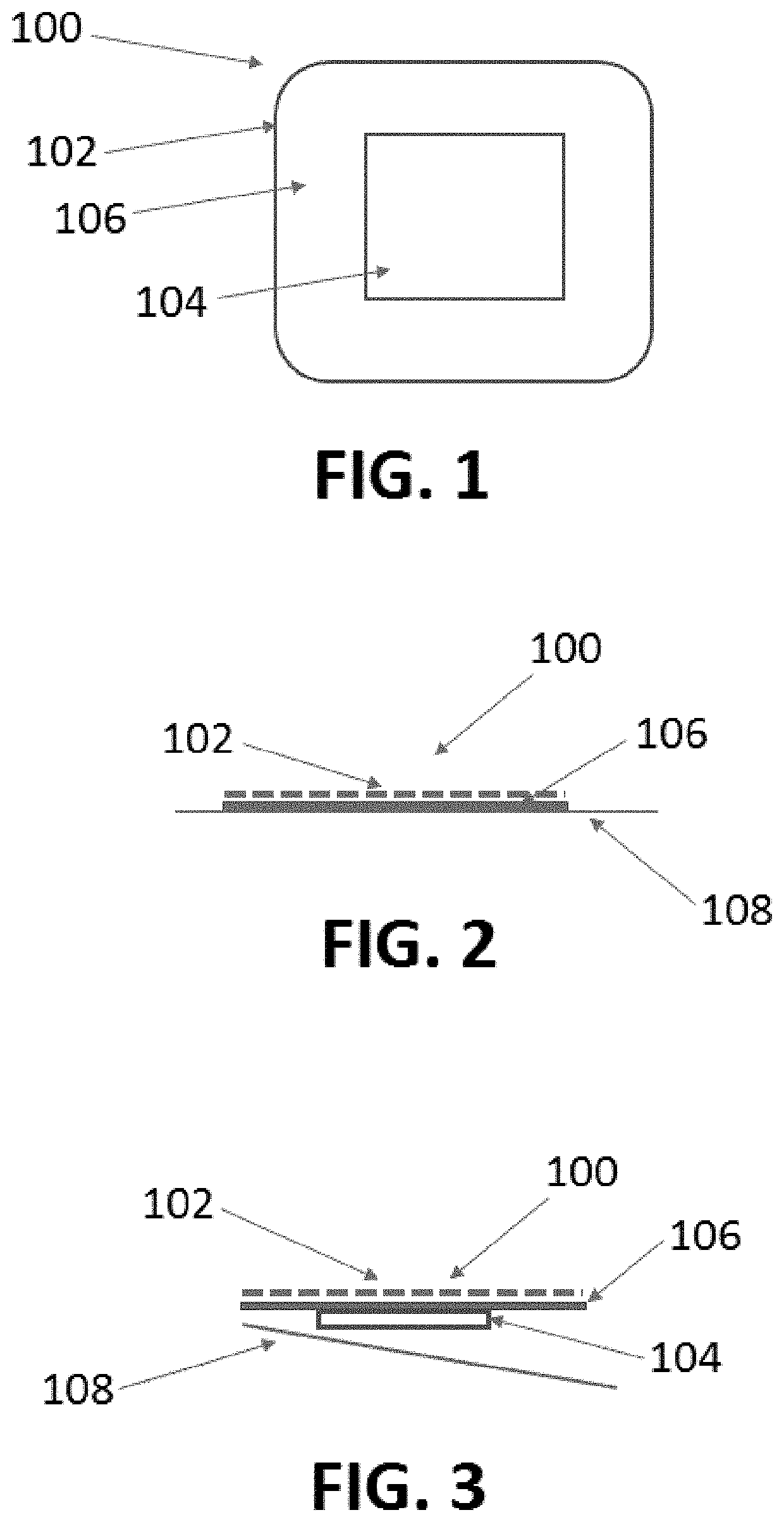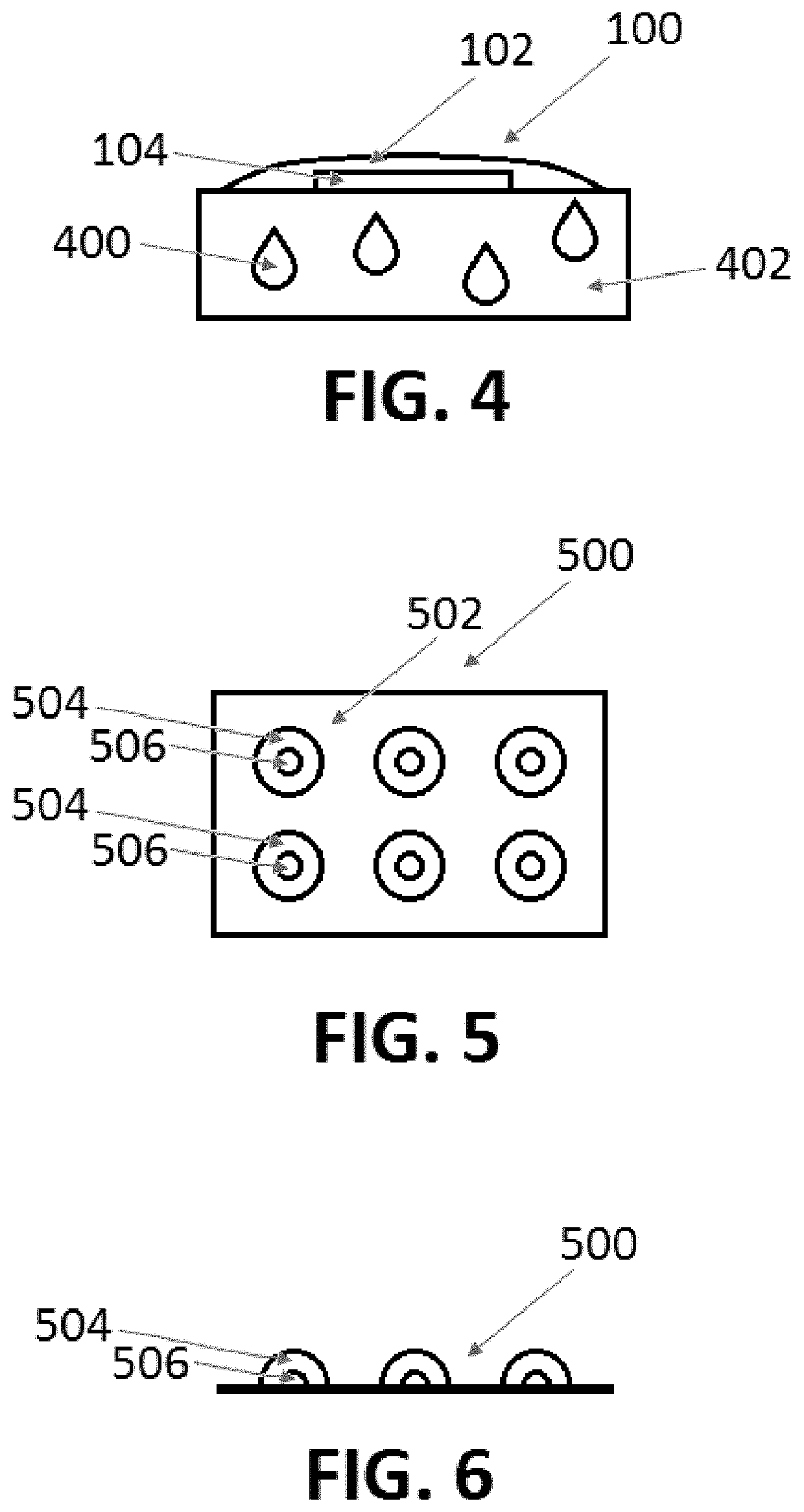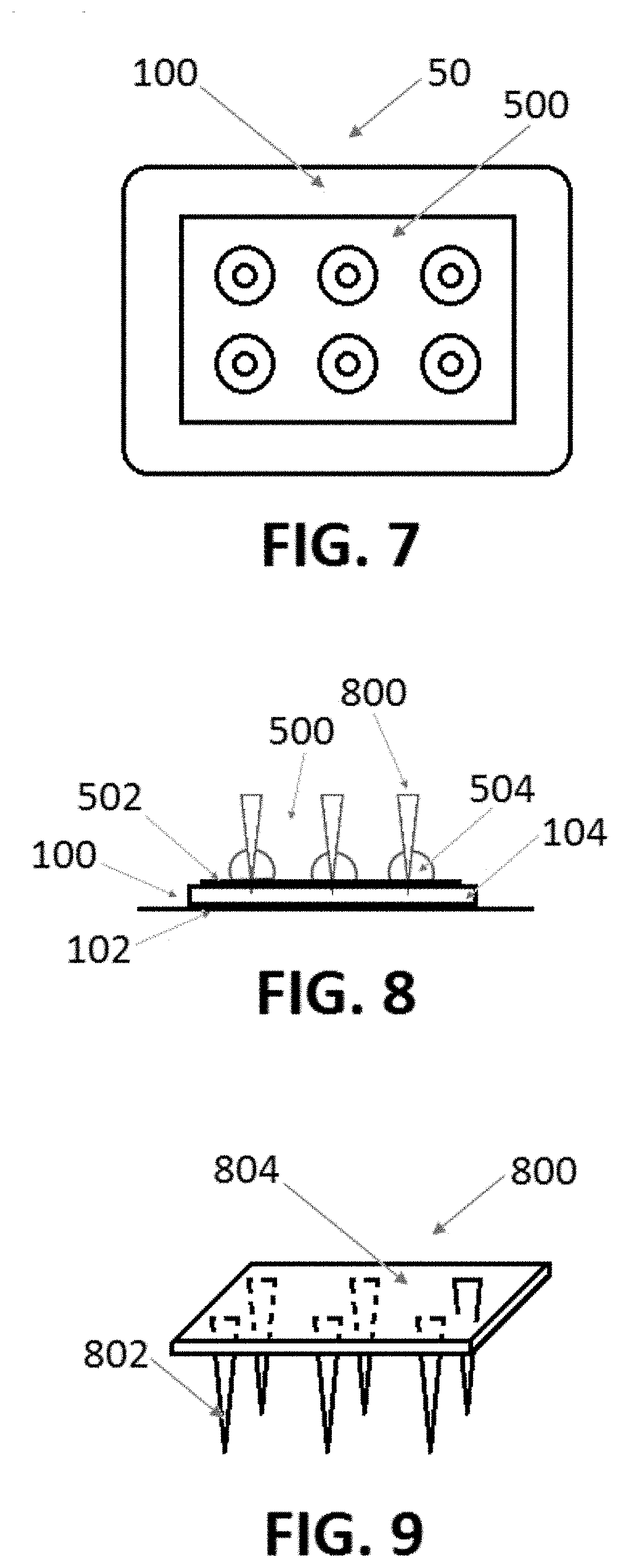Wearable device to screen opioid intoxication
a wearable device and opioid technology, applied in the field of wearable devices to screen opioid intoxication, can solve the problems of urine testing often missing the detection of drugs, unable to detect drugs that have been metabolized, and the negative impact of these drugs is even greater, so as to screen opioids more readily and inexpensively, and reduce the risk of drug overdos
- Summary
- Abstract
- Description
- Claims
- Application Information
AI Technical Summary
Benefits of technology
Problems solved by technology
Method used
Image
Examples
Embodiment Construction
[0047]For the purposes of promoting an understanding of the principles of the present disclosure, reference will now be made to the embodiments illustrated in the drawings, and specific language will be used to describe the same. It will nevertheless be understood that no limitation of the scope of this disclosure is thereby intended.
[0048]Systems 50 of the present disclosure comprise two parts / portions—a sweat patch 100, also referred to herein as a collection part / portion, and a screening pad 500, also referred to herein as a screening part / portion or a detection part / portion. Screening pad 500 is composed of biomarkers, where it will lay on top of the sweat patch after removal. Screening pad 500 will then be removed from the sweat patch 100 after several seconds for color determination by either the naked eye or using a detection device such as a spectrometer. Sweat patches 100 can be slightly heated to evaporate the residual liquid to increase agent concentrations.
[0049]An exemp...
PUM
 Login to View More
Login to View More Abstract
Description
Claims
Application Information
 Login to View More
Login to View More - R&D
- Intellectual Property
- Life Sciences
- Materials
- Tech Scout
- Unparalleled Data Quality
- Higher Quality Content
- 60% Fewer Hallucinations
Browse by: Latest US Patents, China's latest patents, Technical Efficacy Thesaurus, Application Domain, Technology Topic, Popular Technical Reports.
© 2025 PatSnap. All rights reserved.Legal|Privacy policy|Modern Slavery Act Transparency Statement|Sitemap|About US| Contact US: help@patsnap.com



